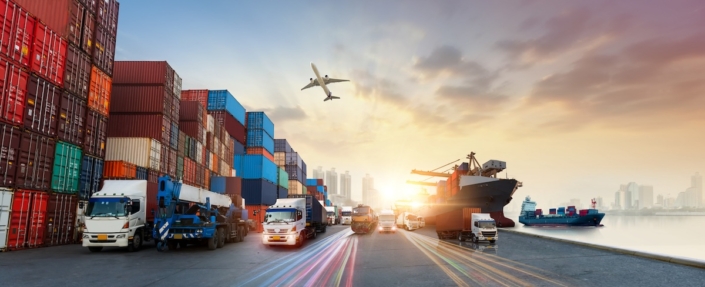It might be one of the most iconic symbols of Christmas.
No, it’s not Santa Claus, a crackling fireplace, or a cluster of holly berries. It’s the leg lamp from the 1983 movie “A Christmas Story” (just stay with us here, ok?).
At one point in this Christmas coming-of-age tale, the main character Ralphie’s father (“The Old Man”) wins a mystery prize in a newspaper contest. When the award finally arrives in an enormous wooden crate, the family gathers around as The Old Man eagerly pries the lid open with a crowbar.
Inside, buried under layers of straw, is the leg lamp: a lamp shaped like the leg of a woman wearing a fishnet stocking. Until the day it’s “accidentally” broken by Ralphie’s mother, the lamp is his father’s pride and joy.

While the movie focuses more on the lamp than the packaging it’s shipped in, we can learn a few lessons on fragile deliveries by taking a closer look at that crate. Let’s review three leg lamp-inspired shipping tips for sending breakable products this holiday season.
Use sturdy, secure packaging materials
While customers shouldn’t have to track down a crowbar to unpack their order, packages should be strong enough to withstand rough handling—especially when the contents are made of glass or other breakable materials. Follow these tips to protect your products from damage.
- Choose the right materials. Use sturdy cardboard boxes for the outer packaging, and make sure to include cushioning materials inside: shredded paper, packing peanuts, or something similar. For especially fragile items, consider using molded inserts. Often made of foam or molded paper pulp, these inserts fit perfectly around products to keep them suspended away from the edges of the package.
- Seal packages tightly. Once you’ve packed boxes, seal them with tape so they stay closed during shipping.
- Don’t forget about sustainability. To make sure you end up on Santa’s (and Mother Nature’s) Nice List, use eco-friendly packaging materials. Avoid traditional styrofoam or plastic when possible, and instead go with biodegradable or recyclable options—there are plenty out there to choose from.
Pick the right package sizes
When the leg lamp arrives, The Old Man spends several minutes digging through the crate trying to find it. As he shifts through a seemingly endless sea of straw, the family starts wondering if there’s any award at all. Finally, The Old Man finds the base of the lamp and triumphantly lifts it up for his wife and kids to admire.
The lesson? When it comes to packaging, bigger isn’t always better.
With parcel shipping, you won’t be sending crates large enough for products to get lost in. However, using oversized packaging still causes issues:
- Damaged products. Products have more room to move around in larger packages, potentially leading to damage.
- Higher materials costs. Why pay more when you don’t have to? If you use boxes that are too large for the products they contain, you’ll be wasting money on packaging.
- Higher shipping costs. When determining shipping charges, carriers often apply dimensional weight pricing, or DIM weight, which considers both the package’s size and weight. If a package is larger than necessary, you’ll end up paying more to ship it—even if it’s lightweight.
- Environmental damage. When you use more packaging materials than necessary, you create waste that ultimately damages the environment.
To avoid these problems, choose boxes just large enough for products to fit inside and fill any remaining space with cushioning materials. If someone orders multiple products, pack as many as possible into a single box. By optimizing packaging size, you’ll keep products intact, save on materials costs, and pay less for shipping.
Label packages properly
When The Old Man reads the prominent “Fragile” label on the lamp leg’s crate, he exclaims, “Fra-gee-lay! Must be Italian.”
Even if he didn’t understand the true meaning of the label at first, the delivery company certainly did. And the label might have been the difference between an intact lamp and a shattered one. The takeaway is clear: When shipping delicate items, clearly label packages as fragile so carriers know to handle them gently.
While the fragile label is important, the shipping label plays an even bigger role in determining a package’s fate. For products to reach their intended destination, shipping labels need to be carrier-compliant and include accurate addresses. Shipping software can help with this!
With clear, accurate labeling, your products have a much higher chance of making it to your customers safely and on time.
Take a lesson from the leg lamp: keep packages safe during the holidays
While these three tips are simple, it’s worth remembering them. If you don’t, you could end up facing damaged products, frustrated customers, and costly returns. Of course, even the best packaging efforts aren’t always enough. To prepare for the unexpected, package insurance is the way to go. For a small portion of the product’s price (EasyPost insurance starts at 0.5% of declared value), you can insure fragile items during shipping. If things go wrong, neither you nor your customers need to worry.
Whether or not you’re shipping an anatomically-inspired lighting fixture this holiday season, take steps to ensure packages make it safely to their destination. Your customers (and possibly their lamps) will thank you for it!
P.S. For more information on EasyPost shipping insurance, get in touch here.



